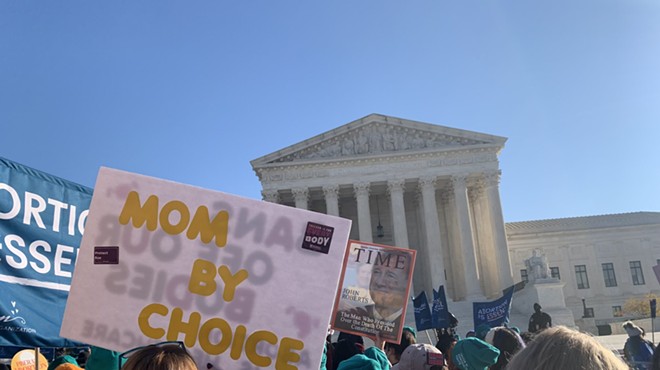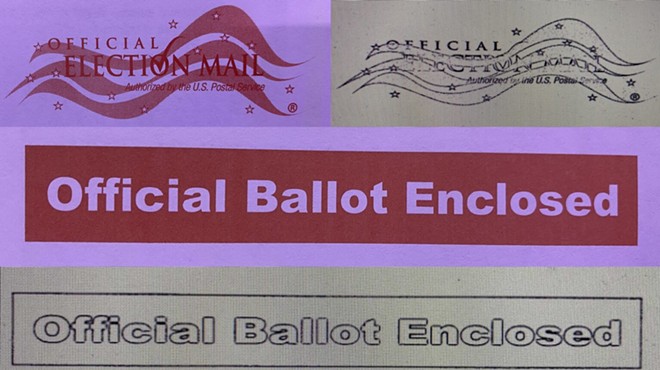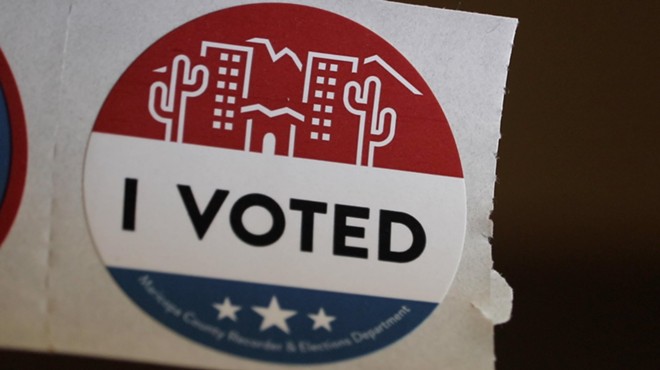Wednesday, October 25, 2017
The Fed Tax Cut, AZ School Grades, Results-Based Funding, and a W.A.G.
The federal tax cut proposals Republicans are putting together will most likely throw a few tax cut bones to the middle class and toss a couple of chicken wings in the direction of the poor so it looks like everyone gets a tax break, but the richest Americans will be the folks getting thick, juicy, medium-rare ribeye steaks grilled to perfection. No one knows whether the bones and wings will make it into the final bill, but it's a sure bet the most powerful Americans can count on being hundreds of thousands or millions of dollars richer if their friends in Congress and the White House can figure out a way to put together the needed votes.
On a smaller scale, something similar is happening with Arizona's school grades and results-based funding. The richest, most powerful Arizonans were promised steak dinners in the form of results-based funding bonuses for the schools their children attend. That worked out just fine in lots of cases, but a few were surprised to find their plates empty, and they're crying foul. Now the state is trying to figure out how to make things right.
Meanwhile, the rest of the schools, those with families in the middle and lower economic ranges, are getting a few results-based bones and chicken wings, but I'm betting some of those will be taken away to make sure the people who really matter to the Republicans in power get the steaks they were promised.
Lots of reporters have been picking up on the story about the state's long-awaited school grades over the past week, because it's a really big deal. The grades posted by the Department of Education were supposed to be final unless a school appealed. Then Tim Carter, president of the state Board of Education, stepped in. He declared the grades "preliminary," to the surprise of pretty much everyone including the other board members who knew nothing of the change until he announced it. As of Monday, however, the Board is on board as well. The posted state grades don't mean a thing until we swing into January, and even the January deadline is far from final.
The state grades worked out almost the way they were supposed to. Almost. The top schools in terms of family income, the ones attended by the children of the wealthiest and most powerful Arizonans, grabbed most of the A's — the top 11 percent got close to 40 percent of all the A grades — and grades slid downward in rough correlation to the family income of students attending the schools. The results should have been acceptable to the people who run things in the state, except for two important problems.
Next school year, every A school will get a whole lot of extra money in the form of results-based funding while the B through F schools get nothing (The funding system works differently this school year). So a number of schools in the high rent areas with B's, or even C's, feel cheated because they didn't get one of those big, juicy results-based steaks they know they deserve. They figure, "Why should the top 11 percent only make up 40 percent of the schools getting the extra funding? Why not more like 50 percent, and include my child's school?"
But even worse, some of the most favored among the favored schools didn't get the A's they expected, and that was enough to make board president Carter reopen the grading system. (Who, I wonder, whispered, or yelled, in his ear, demanding he make the surprising, unilateral decision to say the grades are "preliminary"?)
No one is more upset by the way the grades turned out than the folks who run BASIS charter schools, who happen to be the most connected and pampered educators in the state. They're the crème de la crème, with high state test scores and through-the-roof national rankings, so all their schools should all be getting A's, right? Well, that's not how things worked out. So far, only seven BASIS schools have received their grades. The others are under review because they have both K-8 and high school students, and the state hasn't figured out how to grade hybrid schools like that. But of the seven that received grades, four got B's. The school's test scores were top notch, but their growth scores, the amount each student's score grew from last year to this, were low, which brought down their grades.
(The BASIS folks say their growth scores were hurt because their students' scores were already so high, they had nowhere higher to go. Is that true? I'll discuss the question in a note at the end of the post.)
Think about it for a minute. Let's assume a few BASIS schools got chumped out of their A scores and their results-based funding bonus. So what? The vast majority of schools teaching low income students were cheated out of bonus money because they teach low income students. The entire results-based funding scam is based on the assumption that schools with the highest test scores, which happen to be the schools with the highest income students who have every economic and sociological advantage, should get even more money to add to their advantages. The purpose of the funding is to add increased educational inequity to our out-of-control income inequality.
School grades and results-based funding are slanted in favor of the richest Arizonans. That's not causing much of an uproar. But when a few rich-and-powerful schools don't get what they expect, the whole grading system has to be thrown out.
Let me make what AZ Blue Meanie, my old colleague at Blog for Arizona, calls a W.A.G.: Wild-Assed Guess. I'm guessing that the "new, improved" state grading system bumps more BASIS charters into the A range and increases the percentage of A's given to schools in the highest rent areas. I'm also guessing the change will come at the expense of the schools with students in the middle of the income continuum. So few schools in the lowest income areas are getting A's, I don't think they can lower that number any further. I even think it's possible — though I wouldn't put money on this — that the A's of some middle income schools will be sacrificed to give a few more A's to schools at the low economic end. When the new grading system comes out, we'll see how close my W.A.G.s are to the facts.
A Did-BASIS-get-chumped? Note: Here's how the state calculated schools' growth points according to its 32 page publication about the A-F scoring rules. The part about growth points begins on page 11 if you want to follow along.
A student's growth is calculated by comparing this year's score with other students who had the exact same score in prior years. The more a student grows relative to his/her academic peers, the higher the growth score. So BASIS students aren't being compared to students with low standardized test scores, or vice versa. How much did a BASIS student's score increase compared to students with the same score in prior years? That's the question.
It's true, BASIS has lots of students with very high test scores, but they're being compared with other students across the state with the same high scores, so if they grow more than their academic peers, they should get high growth points. If similar students in other schools grow more on their test scores than those in BASIS, that might mean that while BASIS students enter with high test scores, they don't continue to grow at the same pace as similar students who attend other schools.
The test scores of half of BASIS's students are in the highest level of proficiency, which means that the other half of their students scored more like the rest of the state. In fact, ten percent of BASIS students didn't pass the test. I wonder, how did BASIS's "other half," the lower half, do in terms of growth? That would be an interesting stat. No one can say their scores are too high to measure growth. I wonder, did they do as well as their peers in other schools? The answer would be very, very interesting. This may be a comparison even BASIS can't game.
On a smaller scale, something similar is happening with Arizona's school grades and results-based funding. The richest, most powerful Arizonans were promised steak dinners in the form of results-based funding bonuses for the schools their children attend. That worked out just fine in lots of cases, but a few were surprised to find their plates empty, and they're crying foul. Now the state is trying to figure out how to make things right.
Meanwhile, the rest of the schools, those with families in the middle and lower economic ranges, are getting a few results-based bones and chicken wings, but I'm betting some of those will be taken away to make sure the people who really matter to the Republicans in power get the steaks they were promised.
Lots of reporters have been picking up on the story about the state's long-awaited school grades over the past week, because it's a really big deal. The grades posted by the Department of Education were supposed to be final unless a school appealed. Then Tim Carter, president of the state Board of Education, stepped in. He declared the grades "preliminary," to the surprise of pretty much everyone including the other board members who knew nothing of the change until he announced it. As of Monday, however, the Board is on board as well. The posted state grades don't mean a thing until we swing into January, and even the January deadline is far from final.
The state grades worked out almost the way they were supposed to. Almost. The top schools in terms of family income, the ones attended by the children of the wealthiest and most powerful Arizonans, grabbed most of the A's — the top 11 percent got close to 40 percent of all the A grades — and grades slid downward in rough correlation to the family income of students attending the schools. The results should have been acceptable to the people who run things in the state, except for two important problems.
Next school year, every A school will get a whole lot of extra money in the form of results-based funding while the B through F schools get nothing (The funding system works differently this school year). So a number of schools in the high rent areas with B's, or even C's, feel cheated because they didn't get one of those big, juicy results-based steaks they know they deserve. They figure, "Why should the top 11 percent only make up 40 percent of the schools getting the extra funding? Why not more like 50 percent, and include my child's school?"
But even worse, some of the most favored among the favored schools didn't get the A's they expected, and that was enough to make board president Carter reopen the grading system. (Who, I wonder, whispered, or yelled, in his ear, demanding he make the surprising, unilateral decision to say the grades are "preliminary"?)
No one is more upset by the way the grades turned out than the folks who run BASIS charter schools, who happen to be the most connected and pampered educators in the state. They're the crème de la crème, with high state test scores and through-the-roof national rankings, so all their schools should all be getting A's, right? Well, that's not how things worked out. So far, only seven BASIS schools have received their grades. The others are under review because they have both K-8 and high school students, and the state hasn't figured out how to grade hybrid schools like that. But of the seven that received grades, four got B's. The school's test scores were top notch, but their growth scores, the amount each student's score grew from last year to this, were low, which brought down their grades.
(The BASIS folks say their growth scores were hurt because their students' scores were already so high, they had nowhere higher to go. Is that true? I'll discuss the question in a note at the end of the post.)
Think about it for a minute. Let's assume a few BASIS schools got chumped out of their A scores and their results-based funding bonus. So what? The vast majority of schools teaching low income students were cheated out of bonus money because they teach low income students. The entire results-based funding scam is based on the assumption that schools with the highest test scores, which happen to be the schools with the highest income students who have every economic and sociological advantage, should get even more money to add to their advantages. The purpose of the funding is to add increased educational inequity to our out-of-control income inequality.
School grades and results-based funding are slanted in favor of the richest Arizonans. That's not causing much of an uproar. But when a few rich-and-powerful schools don't get what they expect, the whole grading system has to be thrown out.
Let me make what AZ Blue Meanie, my old colleague at Blog for Arizona, calls a W.A.G.: Wild-Assed Guess. I'm guessing that the "new, improved" state grading system bumps more BASIS charters into the A range and increases the percentage of A's given to schools in the highest rent areas. I'm also guessing the change will come at the expense of the schools with students in the middle of the income continuum. So few schools in the lowest income areas are getting A's, I don't think they can lower that number any further. I even think it's possible — though I wouldn't put money on this — that the A's of some middle income schools will be sacrificed to give a few more A's to schools at the low economic end. When the new grading system comes out, we'll see how close my W.A.G.s are to the facts.
A Did-BASIS-get-chumped? Note: Here's how the state calculated schools' growth points according to its 32 page publication about the A-F scoring rules. The part about growth points begins on page 11 if you want to follow along.
A student's growth is calculated by comparing this year's score with other students who had the exact same score in prior years. The more a student grows relative to his/her academic peers, the higher the growth score. So BASIS students aren't being compared to students with low standardized test scores, or vice versa. How much did a BASIS student's score increase compared to students with the same score in prior years? That's the question.
It's true, BASIS has lots of students with very high test scores, but they're being compared with other students across the state with the same high scores, so if they grow more than their academic peers, they should get high growth points. If similar students in other schools grow more on their test scores than those in BASIS, that might mean that while BASIS students enter with high test scores, they don't continue to grow at the same pace as similar students who attend other schools.
The test scores of half of BASIS's students are in the highest level of proficiency, which means that the other half of their students scored more like the rest of the state. In fact, ten percent of BASIS students didn't pass the test. I wonder, how did BASIS's "other half," the lower half, do in terms of growth? That would be an interesting stat. No one can say their scores are too high to measure growth. I wonder, did they do as well as their peers in other schools? The answer would be very, very interesting. This may be a comparison even BASIS can't game.
Tags: Arizona test scores , Arizona school grades , Results-based funding , Tim Carter , Arizona Board of Education , BASIS charter schools














